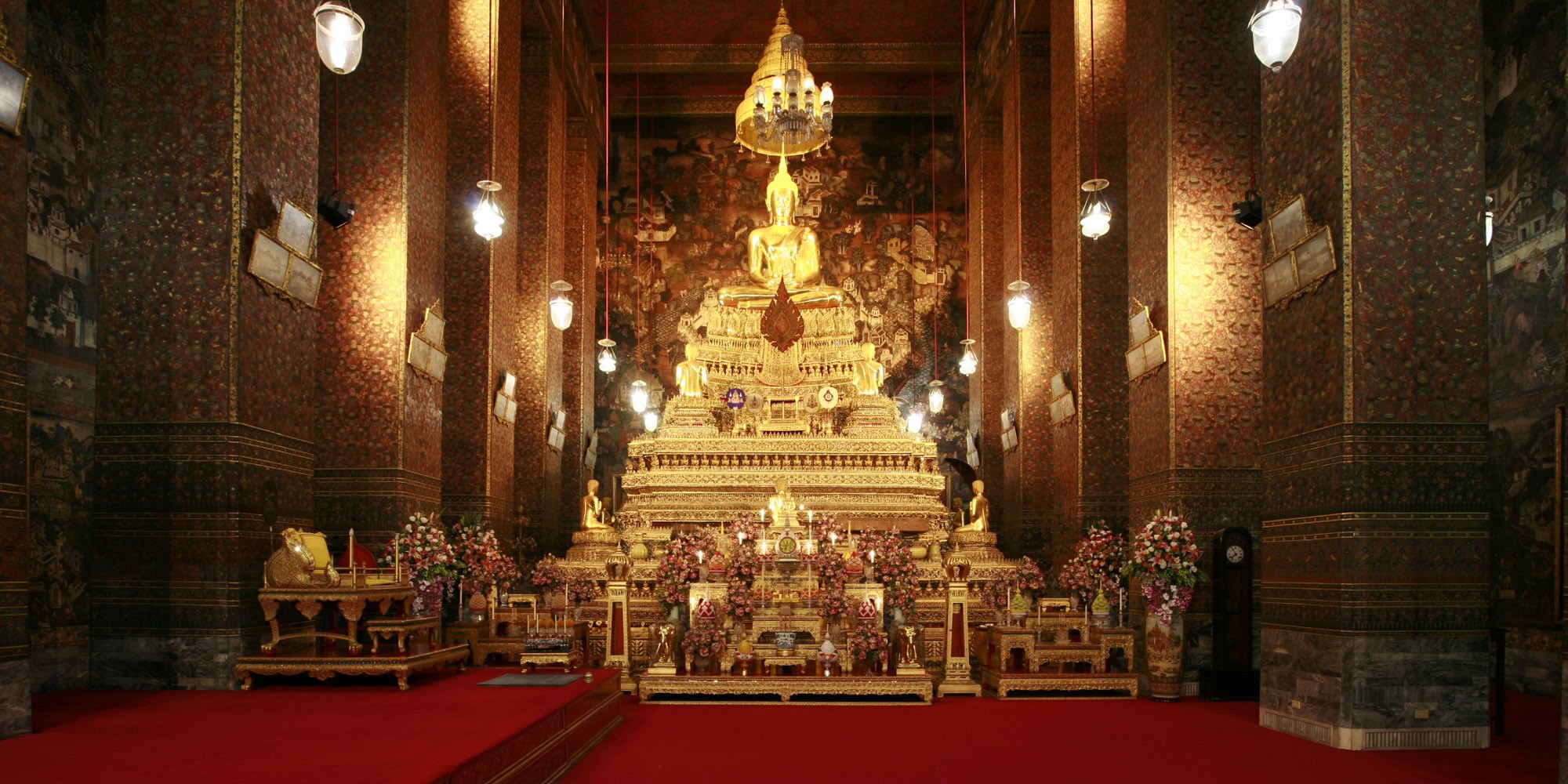

Phra Ubosot, the Assembly Hall for performing the monastic ritual, was constructed in the reign of King Rama I in Ayudhya style. It was then reconstructed and enlarged during the reign of King Rama III. All sheltered windows and doors are made of hard wood with crown–like spires and colour-glazed tiles. Inlays of mother–of–pearl on the outer side of the entrance door panels depict episodes from the Ramakien (the Thai version of the Ramayana – the world famous Indian epic); while on the inner side are painted specimens of ecclesiastical fans of rank which are presented to the monk sovereigns.
The principal Buddha image is “Phra Buddha Theva Patimakorn” in a gesture of seated Buddha on a three tiered pedestal called Phra Pang Smardhi (Lord Buddha in the posture of concentration), and some ashes of King Rama I are kept under the pedestal. The mural paintings in the hall depict Mahosatha Pandita (The Great Bachelor of Mithila City), The heavens, and Phra Etadagga a disciple. On the middle tier there are two images of the Original Disciples, while the eight effigies of the Holy Priests stand on the lowest pedestal. Inside panels of the windows are decorated with lacquer work of the seals of these monastery dignitaries (in the reign of King Rama III).